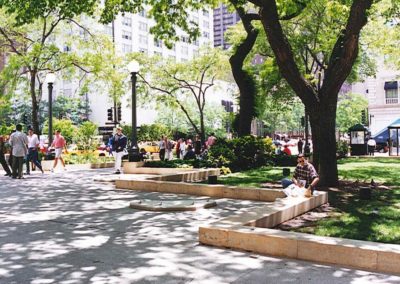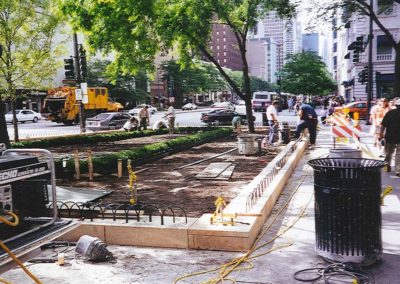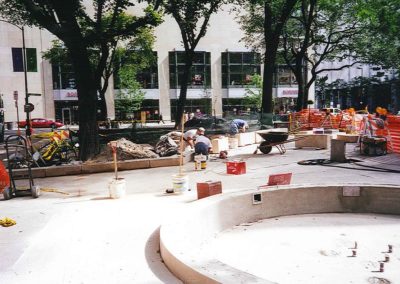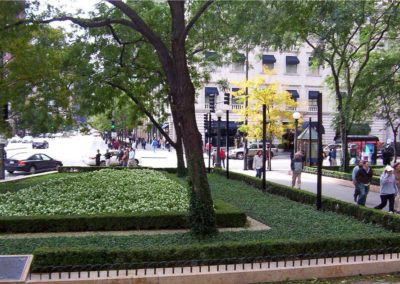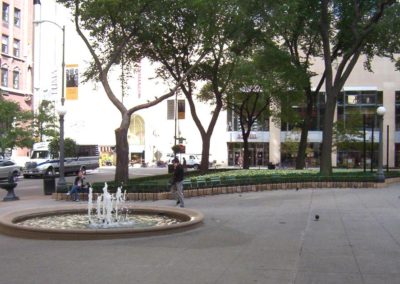EXISTING CONDITIONS/CHALLENGES
Scott Byron & Co., Inc. was approached in the fall of 1999 by a public/private partnership that included: The City of Chicago Dept. of Cultural Affairs, City of Chicago Water Dept., the Michigan Avenue Merchants Association, and private citizens to develop design and maintenance options to enhance visual appearance, usability, and security for The Chicago Water Tower. Having undergone previous unsuccessful renovation and maintenance, this Chicago icon and standing tribute to the Chicago Fire of 1871 no longer serviced its functional and aesthetic purpose as a gateway and anchor to Michigan Avenue. With input from photographer and artist Victor Skrebneski and former Chicago Mayor Richard Daley, we developed a design program that included: planting design, significant hardscape and masonry improvements, enhanced lighting, fountain installation, ornamental metalwork, and improved pedestrian access, circulation, and safety. Due to the Water Tower’s iconic status, it remained open and accessible during the entirety of construction. Also, we were given a tight timeline for completion of mid-May 2000.
DESIGN PROCESS/CONSTRUCTION SOLUTIONS
Thus, design and construction were underway. Using the existing masonry curb wall as a visual cue, we proposed modifying the existing hardscape to form a quadrant system that created a solid and straightforward geometrical platform for plantings of boxwood, ivy, and annual flowers. Due to its status as a historical landmark, careful attention was paid to matching the historic Joliet/Lemont Limestone color, thus maintaining the historical and natural aesthetic of the Water Tower and its adjoining park. Furthermore, echoing the strength of the Water Tower, we installed a fountain on the park’s west side that included a central water jet to reinforce the tower’s verticality. The fountain, capped with custom Limestone coping, maintained the aesthetic of the existing stone on site. Finally, the installation of Parisian-influenced ornamental ironwork into the stone curbing added further geometric emphasis. Additional light standards to match the existing historical styles added safety and security, thus completing the design program.
RESULTS:
The build was not without its challenges. Having to coordinate the schedules of masonry, electrical, irrigation, and fencing subcontractors and extensive coordination with City Agencies required a tremendous amount of organization and open communication. By implementing weekly meetings and constant check-ins with all the subcontractors, schedules were easily maintained and coordinated. The meetings also served to efficiently install a significant amount of new plant material, including over 400 large boxwood, 8,000 ivies, 2,000 annuals, and 12,000 tulips. Despite the constraints of schedule and logistics, the historical Chicago Water Tower Park was ready in time for the dedication. We were able to complete the project according to plan and within budget by May 2000. What remains today is a standing testament to the artistry of the design in harmony with the historical nature of the monument to which it surrounds: Art in Harmony with Nature.


